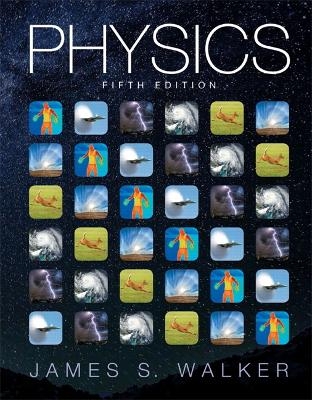
Optical Harmonics in Molecular Systems – Quantum Electrodynamical Theory
Wiley-VCH Verlag GmbH (Hersteller)
978-3-527-60274-2 (ISBN)
- Keine Verlagsinformationen verfügbar
- Artikel merken
In recent years the generation of optical harmonics in molecular systems has become an area of increasing interest for a number of reasons. First, many organic crystals and polymeric solids prove not only to have usefully large optical nonlinearities but also to be surprisingly robust and thermally stable. Consequently the fabrication of organic materials for laser frequency conversion has become very much a growth area. At interfaces and in partially ordered systems, harmonic generation is now of considerable scientific interest through the detailed structural information it affords. And in molecular gases and liquids, processes of optical harmonic conversion present a powerful tool for the study of both static and dynamic effects of molecular orientation. Where the detailed nonlinear optical response of molecules is required, the application of molecular quantum electrodynamics (QED) brings both rigour and conceptual facility. Using this approach the authors address topics of direct experimental concern in a general formulation of theory for optical harmonics, with a particular focus on quantum optical and molecular aspects.
A detailed basis is provided for the applications, enabling the characteristic features of optical nonlinearity to be examined in general terms. A great many of the optical phenomena subsequently addressed find wide application in nonlinear optics and chemical physics. Specifically, the book deals with coherent harmonic generation, both within and at interfaces between different media. It addresses elastic second harmonic (Hyper-Rayleigh) light scattering as well as the inelastic case normally referred to as Hyper-Raman scattering. Full and detailed tables and results are provided for the analysis of experimental observations.
1. Prof. Dr. David L. Andrews, School of Chemical Sciences, University of East Anglia, GB Highly respected and has made major interesting contributions in the field. His works are very deep and illuminating. Professor Andrews has also published in condensed matter QED, though not to the same extent. One of his books has gone to a third edition, and another has been reprinted. - Resonance Energy Transfer (Wiley 1999); ISBN 0-471-98732-8 (488 pp., $ 245, DM 355) - Lasers in Chemistry (Springer 3rd edition 1997); ISBN 3-540-61982-8 (232 pp., $ 63, DM 78) - An Introduction to Laser Spectroscopy (Plenum Pub Corp 1995) ISBN 0-306-45203-0 ($91.50) - Applied Laser Spectroscopy (Wiley-VCH 1992) ISBN 0-471-18782-8 (471 pp., $ 175, DM 388) lt. PIV OOP, lt. Wiley-Homepage lieferbar - Perspectives in Modern Chemical Spectroscopy (Springer 1990) ISBN 0-387-522182 ($ 65) 2. Dr. Philip Allcock, Physics Department, University of Bath, GB
BULK MODES Bulk modes in terms of fields Bulk modes in terms of potentials MODEL DIELECTRIC FUNCTIONS Lorentz' classical model for the dielectric function of insulators Drude's classical model for the dielectric function of metals Modelling Dielectric function of a plasma Static dielectric function for a dilute gas of permanent dipoles Debye rotational relaxation Dielectric properties of water Superluminal speeds ZERO-POINT ENERGY OF MODES MODES AT FLAT INTERFACES Modes at a single interface Modes in slab geometry The Casimir effect Metal surfaces Quantum wells FORCES Two molecules with permanent dipole moments One ion and one molecule with permanent dipole moment Two molecules one with and one without permanent dipole moment Two molecules without permanent dipole moments Two ions Three or more polarizable atoms Ineraction between macroscopic objects Interaction between two spheres: limiting results Interaction betweeen two spheres: general results Gernal expression for small separations Cylinders and half-spaces Summation of pair interactions Derivation of the van der Waals equations of state ENERGY AND FORCE Interaction energy at zero temperature Interaction energy at finite temperature Surface energy, method 1: no retardation Surface energy, method 1: retardation Surface energy, method 2: no retardation Surface energy, method 2: retardation Finite temperatures Recent results for metals Adhesion, cohersion, and wetting Finding the pair interactions MODES AT NON-PLANAR INTERFACES Modes at the surface of a sphere Modes at the surface of a cylinder Modes at an edge Modes in a needle (a paraboloid of revolution) DIFFERENT MODE TYPES Polar semiconductors or ionic insulators Metallic systems Characterization of different surface mode types Spatial dispersion Surface roughness The ATR method Earthquakes, rainbow and optical glory COLLOIDS Milk Stability of colloids Formation of the double layer Gouy and Chapman theory Stern's theory of a flat double layer The Zeta-potential Interaction energy and force between
| Erscheint lt. Verlag | 28.1.2005 |
|---|---|
| Verlagsort | Weinheim |
| Sprache | englisch |
| Maße | 130 x 250 mm |
| Gewicht | 666 g |
| Themenwelt | Naturwissenschaften ► Physik / Astronomie |
| ISBN-10 | 3-527-60274-7 / 3527602747 |
| ISBN-13 | 978-3-527-60274-2 / 9783527602742 |
| Zustand | Neuware |
| Haben Sie eine Frage zum Produkt? |
aus dem Bereich


